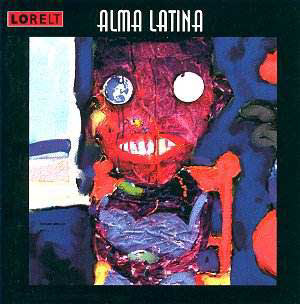Electroacoustic Music from Latin America? The editor
of the present CD, Odaline de la Martinez, is aware of this unusual
pairing. Unusual at least for European ears. In her preface she recounts
this little anecdote:
"Not long ago I had a conversation with a fine
British musician who had been both attending and adjudicating some of
the electronic competitions in the continent. His words were something
like ‘Those Latin Americans, their music is so original that they walk
off with all the prizes.’"
And indeed the twelve tracks by five Latin American
composers on this disc are full of inspiration, surprises and a wide
range of ‘acousmatic’ music, ranging from the eclectic use of dance
forms to the most sublime minimalism.
M. Rosas Cobian, an Argentinian composer, born
in 1953, has the privilege of opening and to concluding the CD. His
Gato’s Raid for marimba and electroacoustic sounds is from 1994.
It is an almost impressionistic work. The program of the ‘Cat’s Raid’,
is a journey through the musics and cultures of America, from its ethnic
regional music to the present.
Whereas Gato’s Raid follows a traditional pattern
of ‘Programmusik’, Augustín Fernández’s Silent
Towers for tape (1990) comes from the more experimental direction
of contemporary music. This twelve minute composition follows the idea
of the juxtaposition of two types of sound and their respective characters
and atmospheres. The continuous harmonic flow of the sound, represented
by one of those spheres is punctuated by another sound pattern that
will finally freeze the harmonic flow until the two types of music interlock.
The contact between them brings about a new character. The point of
this composition is that tape music generally communicates none of its
physical information. Where the ear seems to be able to infer something
about the sound patterns and their atmosphere, the inner ear combines
the two different sounds to produce a third one.
Latin Soul, Alma Latina (1996, rev. 1997), by Rajmil
Fleischman from Peru is the most hermetic work on the present disc.
There are notes about the piece and its mental and biographical background
in the booklet. These help in placing the concept together with the
brutal acoustic sounds. "Images of pain" predominate alongside
shreds of the "physical sensation of dance", laughter, mourning
and singing. The very concept of a Latin Soul is more an intellectual
than an acoustic one.
The Five Micro-Études for tape (1992)
are the first attempts of Mexican-born Gabriela Ortiz to compose
for unadorned electroacoustic sounds. They are études in the
classical sense of the term. These short little pieces - all are about
two minutes long – treat different musical questions and explore the
possibilities of electroacoustic sounds. The pieces contain small rhythmic
and melodic inflections.
Timbral and rhythmic structures are the subject of
Mario Verandi’s Dancescape for tape from 1996. Vocal sounds
and instrumentals dominate in M. Rosas Cobian’s three pieces from his
Urbis #4 for tape. The composer states that this work is an expression
of his relationship with the city, popular culture, jazz and other mundane
events of his daily life. His clips are a virtuoso mix and re-mix of
sonic and musical vocabularies, playing with effects of dynamics and
silence.
The CD comes with a booklet that is full of informative
explanations of the different works.
All five Latin American composers on this CD have studied
or lived in Europe, and worked at the most important centres of electroacoustic
music. Whatever the strengths of these pieces I find it impossible to
find a specifically Latin soul in this music. The specifics and roots
of Latin American musicality do not seem to have any linkage with electroacoustic
soundscapes.
Uwe Schneider


![]() See
what else is on offer
See
what else is on offer 